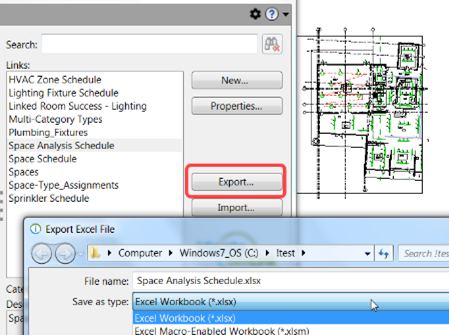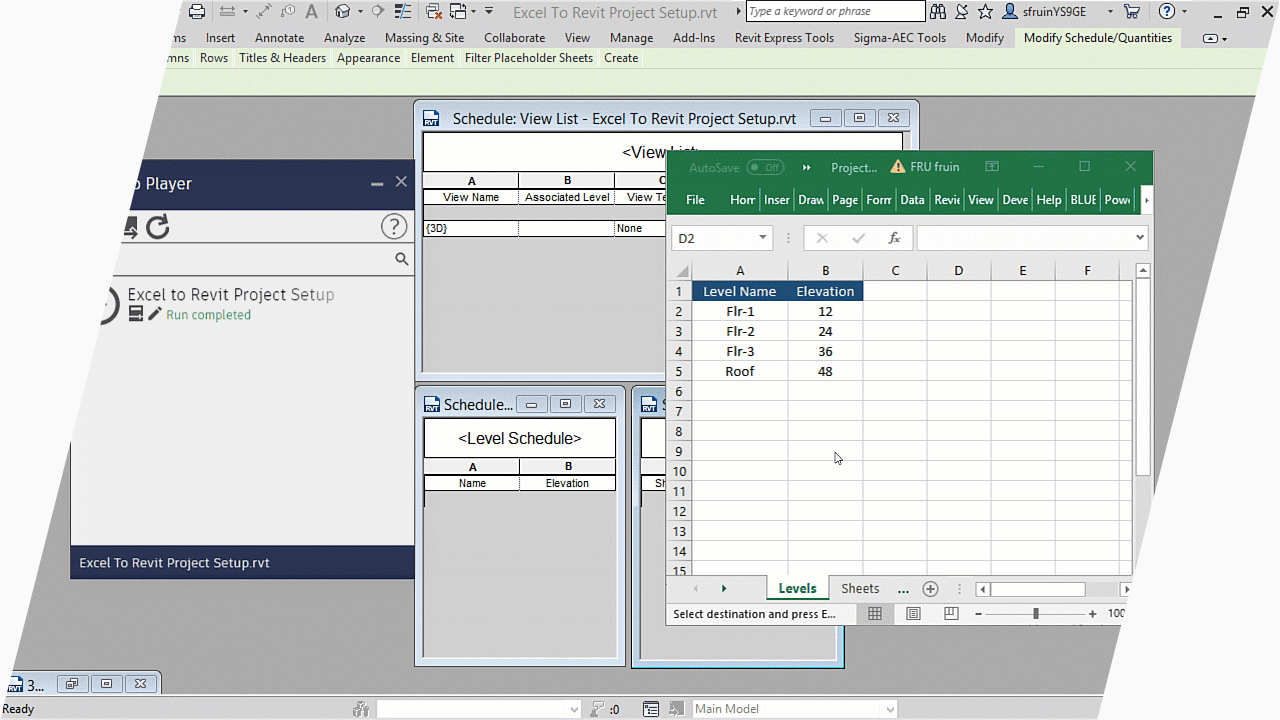Boost Your Revit Experience with Important Revit Tools and Add Ins
Wiki Article
Revit Excel Assimilation Demystified: Streamlining Operations for Boosted Task Control
Are you tired of battling with inefficient task control and time-consuming operations? Look no more, because Revit Excel Assimilation is here to demystify the procedure and streamline your tasks. With this effective tool, you can boost project coordination and get rid of the headache of manual information entrance. In this post, we will certainly guide you with the value of Revit Excel Assimilation, show you exactly how to streamline operations, and supply finest methods for effective integration. Prepare yourself to change your job coordination effortlessly.The Relevance of Revit Excel Integration
You need to recognize the value of Revit Excel integration to efficiently enhance your workflows and boost job coordination. The combination of Revit, an effective building information modeling (BIM) software program, with Excel, a commonly made use of spread sheet program, offers various advantages for engineers, designers, and building specialists.

By integrating Revit with Excel, you can eliminate hand-operated information entrance and decrease the threat of mistakes. This not just conserves time yet additionally ensures precision in your job documents. You can update information in Excel, and it will immediately update in Revit, maintaining consistency throughout your task.
Furthermore, Revit Excel assimilation enhances job sychronisation by enabling efficient partnership among staff member. With data synchronized in between Revit and Excel, everybody can access the most up-to-date details and work together flawlessly. This advertises smoother interaction, decreases conflicts, and improves total task efficiency.
Exactly How to Improve Workflows With Revit Excel Combination
Optimize your procedure by effortlessly linking Revit and Excel to improve your workflow. By incorporating these 2 powerful tools, you can improve project sychronisation and boost performance in your work. With Revit Excel assimilation, you can conveniently transfer information between both systems, allowing for smooth communication and cooperation.

An additional benefit of Revit Excel integration is the ability to create custom-made reports and evaluate information much more effectively. With Excel's durable attributes, you can do sophisticated calculations, create graphs and charts, and generate comprehensive records based on the information from your Revit models. This permits you to gain important understandings and make informed choices throughout the task.
Enhancing Task Sychronisation With Revit Excel Assimilation
By seamlessly attaching your design software with effective information analysis devices, you can significantly improve the control of your projects. Revit Excel combination permits you to improve your workflows and boost project control by getting rid of hands-on information access and reducing mistakes. With this assimilation, you can conveniently revit add ins transfer data between Revit and Excel, ensuring that all task details is up to date and exact.Among the key advantages of Revit Excel combination is the capability to import and export data in between the 2 software perfectly. This suggests that you can conveniently import existing job data from Excel right into Revit, saving you effort and time in coming back info. You can export project information from Revit to Excel, enabling you to do sophisticated evaluation and calculations utilizing the effective attributes of Excel.
In Addition, Revit Excel assimilation allows you to create vibrant links between the 2 software program (import excel into revit). This means that any type of adjustments made in Revit will automatically update in Excel, and vice versa. This guarantees that all task stakeholders are dealing with the most up-to-date info, boosting task control and decreasing the risk of errors
Conquering Difficulties in Revit Excel Combination
When getting rid of challenges in the combination of Revit and Excel, it is very important to ensure seamless data transfer and lessen mistakes. One common obstacle is the compatibility of data styles in between Revit and Excel. To tackle this, you can utilize plugins or add-ins that promote the conversion of information from one style to an additional. These devices aid preserve the integrity of the data during the transfer process.One more obstacle is the lack of synchronization between Revit and Excel. It's critical to develop a clear process that makes certain both systems are updated in real-time. This can be accomplished by using cloud-based collaboration tools or developing a system for normal information syncing.
Taking care of large datasets can additionally be problematic. Revit and Excel have different capabilities when it involves managing large amounts of information. To conquer this obstacle, you can divide the information right into smaller, workable chunks or make use of data filtering strategies to concentrate on certain locations of interest.
Last but not least, human mistake can lead to inconsistencies in between Revit and Excel information. It is essential to train group members on the integration procedure and develop high quality control steps to catch any kind of errors. Normal audits and cross-checks can help determine and remedy any kind of incongruities.
Ideal Practices for Effective Revit Excel Assimilation
To make sure successful assimilation of Revit and Excel, it's essential to comply with some best techniques that will aid improve your operations and decrease errors. Always begin by producing a orderly and clear folder structure for your task documents. This will certainly make it much easier to find and update the necessary files when required. Furthermore, when connecting Excel data right into Revit, ensure that the data is totally free and tidy from any type of format concerns that could trigger mistakes. Usage regular calling conventions for your Excel worksheets and columns to avoid confusion.One more crucial method is to frequently upgrade your Excel data in Revit. This can be conveniently attained by establishing a clear process for upgrading the linked information. Make it a behavior to evaluate and upgrade the data at regular intervals, specifically when changes are made to the job. This will aid keep your data exact and approximately date.

Verdict
So, there you have it - revit Excel combination does not have to be a complicated job. With revit Excel integration demystified, you'll be well on your method to maximizing the capacity of these tools and taking your jobs to new heights.You can export your Revit routines to Excel, make adjustments or updates in Excel, and after that import the updated information back right into Revit with simply a couple of clicks. Revit Excel combination enables you to improve your operations and boost task coordination by getting rid of manual data access and reducing mistakes. With this assimilation, you can quickly transfer information between Revit and Excel, guaranteeing that all job information is up to day and exact.
You can export task data from Revit to Excel, allowing you to execute innovative evaluation and estimations utilizing the effective attributes of Excel.
Additionally, when connecting Excel information right into Revit, ensure that the data is clean and totally free from any type of formatting problems that could cause errors.
Report this wiki page